Repurposing Tirana’s Nuclear Bunkers Part 2

The BunkArt project has established two museums/art galleries within a couple of Tirana, Albania’s Cold War-era nuclear bunkers. After having a fascinating time exploring BunkArt 2, I set off on a sunny winter’s day to walk the hour-and-a-bit from central Tirana to BunkArt 1.
On the way I stopped in at a bakery for a mid-morning snack. I must admit I find transactions in countries where I can’t speak the language (which is just about everywhere) a little intimidating. Thankfully shopkeepers tend to be patient with foreigners, and use a calculator or paper and pen to show the total price of the purchase. I bought a couple of bread rolls and a slice of pizza, and fumbled self-consciously to find the appropriate notes and coins. Whilst I was dicking around with the money, I didn’t notice a staff member whisk my pizza slice away and into the oven. After receiving my change, I picked up my white paper bag of goodies and headed out the door. I was at least a hundred metres away from the store when I heard someone call out behind me, and I saw a bloke from the bakery running up with my pizza slice. What a top bloke!
I was the first visitor of the day to arrive at the BunkArt 1 ticket booth, and after forking out my lek I made my way up the pathway to the bunker entrance. The complex that now houses BunkArt 1 took six years to build, and was designed to house Albania’s government and military command in the case of nuclear war or chemical weapons strike.
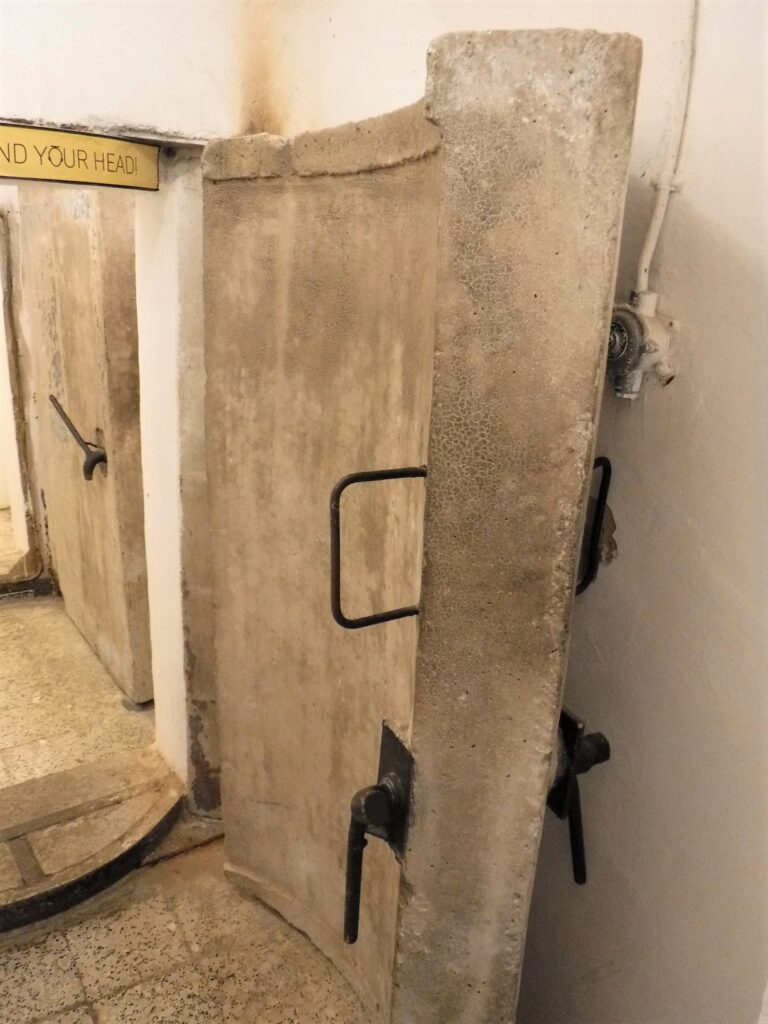
The concrete walls of the bunker are one metre in width, internally lined with bricks, and the domed roof is covered by earth up to 100 metres thick. I had thus far spent my entire time at Albanian tourist attractions being freaked out, and entering BunkArt 1 through a series of massive doors I felt that familiar feeling once again. Blast doors and airlocks were designed to withstand explosions and keep radiation and other chemical agents out.
Serious business
Beyond the entrance door was the decontamination room, where people who had potentially been exposed to something lethal could shower before entering the bunker.
Creepy
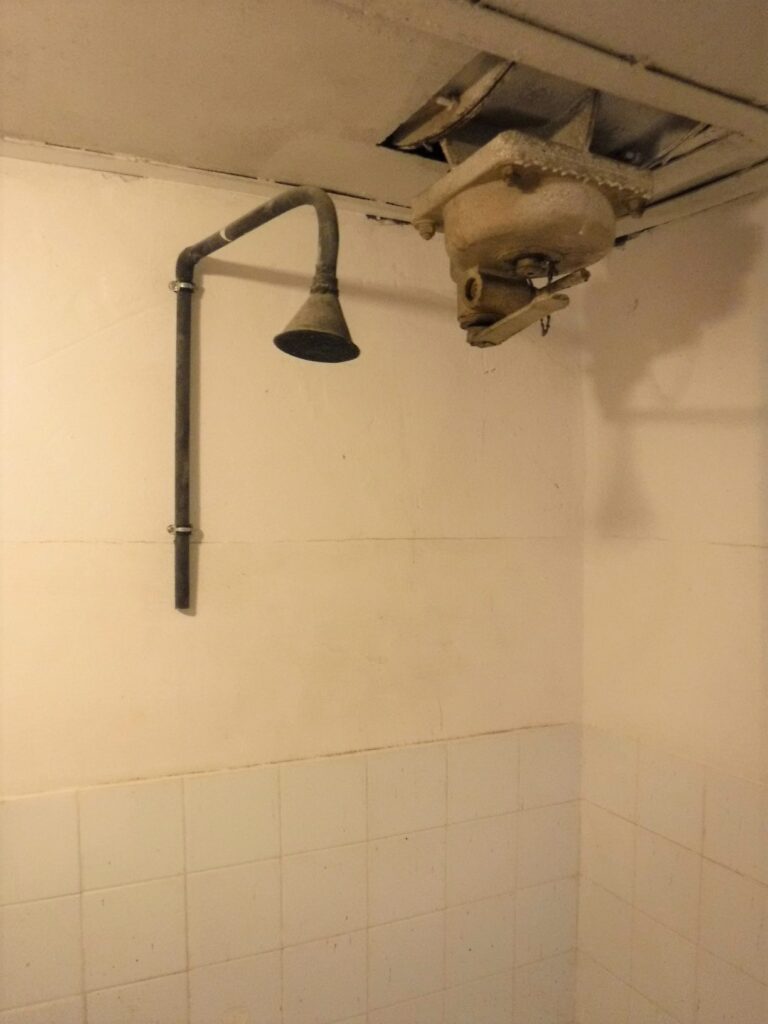
Once inside, long corridors provided access to the complex’s 106 offices. Wandering through the enormous bunker with no-one else around did have a…well…post-apocalyptic feel.

At frequent intervals along the corridors, and in each of the rooms, were a couple of metal cases standing together. In the photo below, the one on the left is a contraption for producing oxygen, and the one on the right holds a chemical. The chemical is inserted into said contraption, giving off oxygen as it comes in contact with the air. An information panel at BunkArt 1 explained: ‘The military had to handle (the chemical) tabs using gloves, which suggests that this system would offer no real guarantees of healthiness’. Still, they were only there for when the bunker was sealed off from the outside air for prolonged periods, and it would be better than dying from hypoxia. Possibly.

Enver Hoxha was the leader of Albania for 40 years, and the architect of its socialist system. Within the bunker complex, Hoxha’s rooms included his office, another for his secretary, a bedroom and a bathroom. Although plush compared to the other rooms within the bunker, the leader’s rooms, considering they were completed in the late 70s, are still a pretty austere affair.
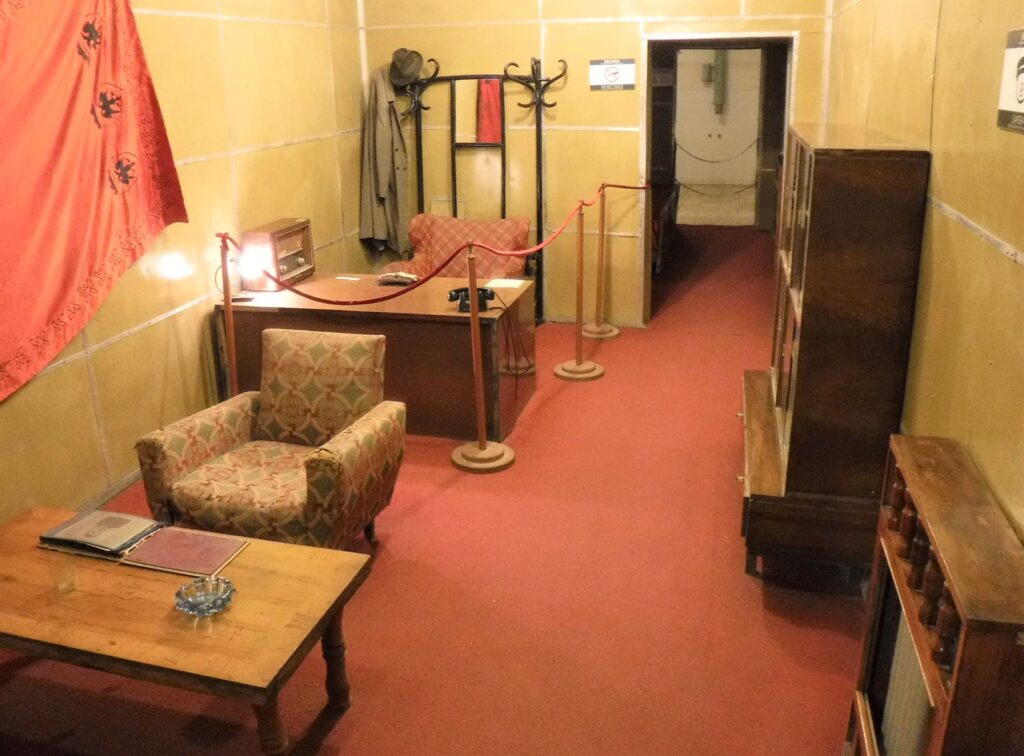
This sleek unit was used by Hoxha himself in one of his offices. Picking up the handpiece, you could listen to a recording of Hoxha’s voice.
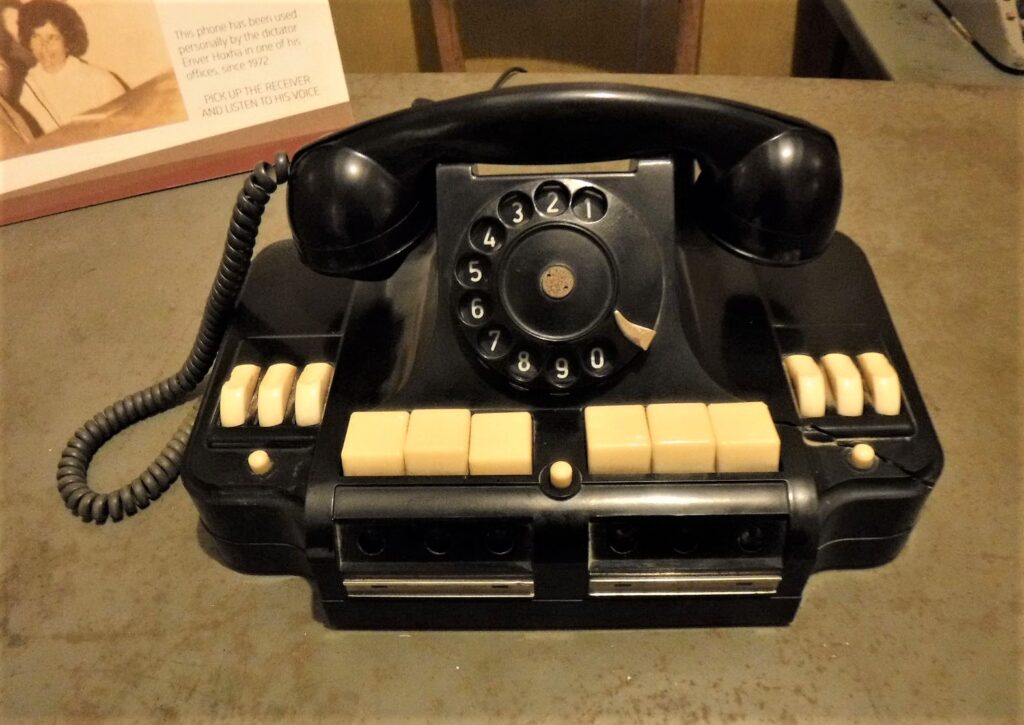
It felt very personal, as if you had the dictator speaking directly to you. Considering the number of people imprisoned, tortured and executed under Hoxha’s rule, this was unsettling.
‘I’d like to order a medium Hawaiian…’
Moving further into the complex, I came across the filter room. The Chinese-built system was designed to filter post-attack poisoned air from outside, and make it marginally less lethal before pumping it around the bunker for the occupants to enjoy.
Looks a little…agricultural
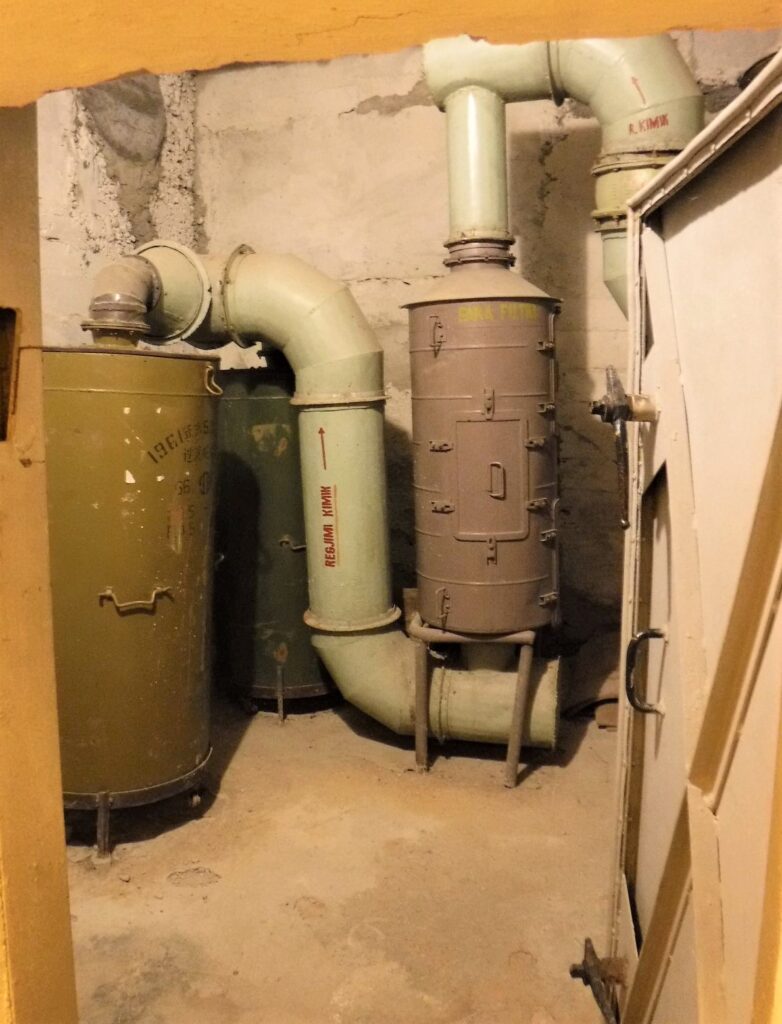
Having explored the small offices that lined the long, narrow, silent corridors of the complex, I reached the Assembly Hall. It felt very strange to suddenly enter such a large open area. It was particularly weird as there was music playing, and an art installation on the stage that looked a little trippy.
The hall was designed to accommodate government meetings and planning operations in times of war. After leaving the rather surreal Assembly Hall I made my way down the corridors to the exit. Through another system of massive concrete doors and I was out into the dim light and chill of the afternoon.
I had a fascinating and unnerving time exploring BunkArt 1, and its comprehensive museums tracking modern Albanian history. Enver Hoxha’s fears of attack and invasion never eventuated, so the bunker was never used in anger. However, visiting such a place certainly gives you an insight into the mindset of Albania’s isolationist dictatorship.
If you enjoyed this post, you may also like BunkArt 2, House of Leaves
Do you have a particular interest in World War I, II and the Cold War? Check out my other blog Ghosts of War. If you enjoy military history, and want to know what it’s like to visit both significant and lesser-known wartime locations today, there’s something there for you.
Leave a Reply